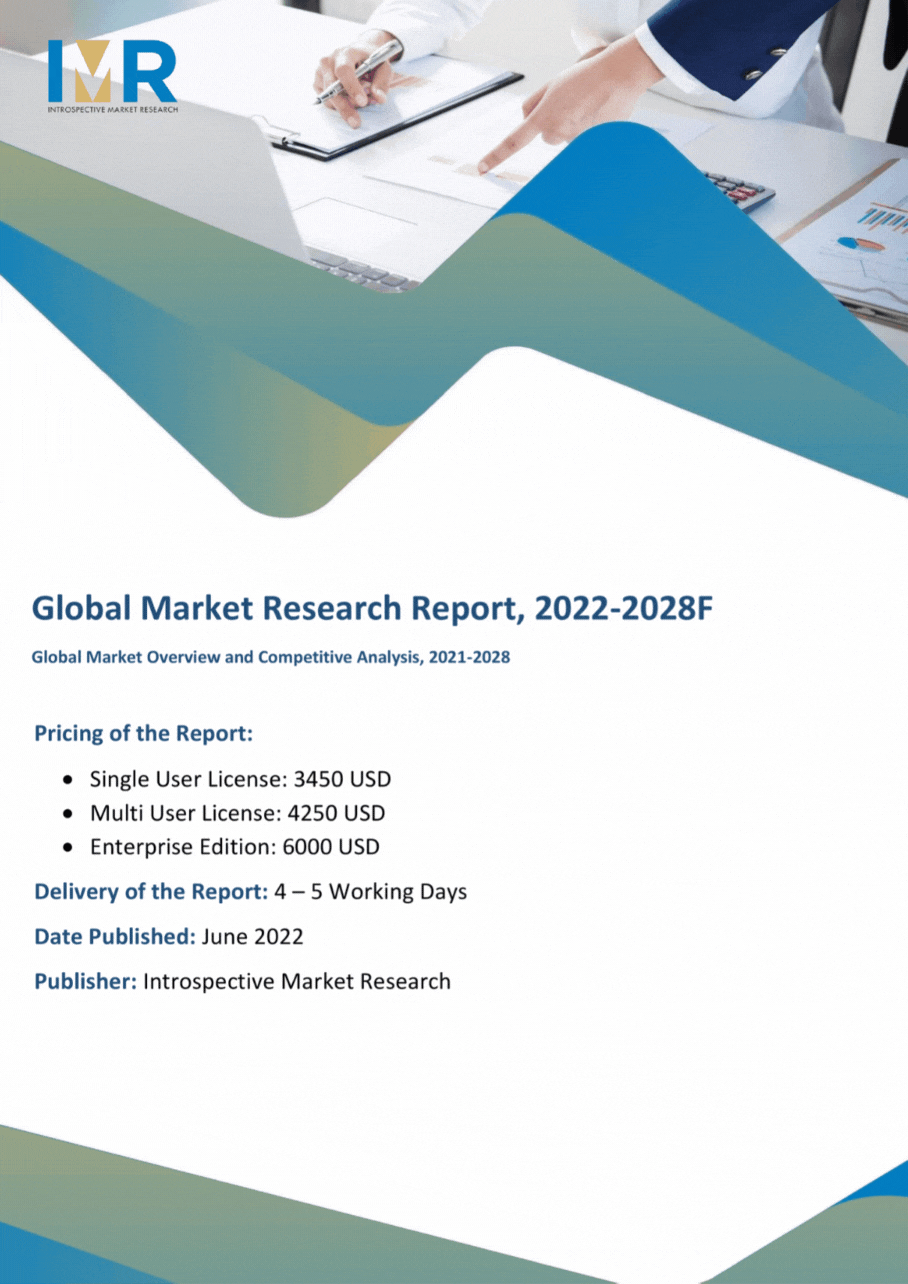Market Overview Of The Cloud Infrastructure as a Service (Iaas) Market
The Global Cloud Infrastructure as a Service (Iaas) market size is expected to grow from USD 163.47 billion in 2022 to USD 622.84 billion by 2030, at a CAGR of 18.20% during the forecast period (2023-2030).
The cloud infrastructure is the collection of the hardware and software components including storage, servers, networking, services, virtualization software, and management tools that are needed for cloud computing and it allows users to access virtualized resources. These components are required to create an application that helps users can access the cloud or retrieve via telecom services, the internet, and wide-area networks. The cloud computing infrastructure is accessible for public cloud, private cloud, and hybrid cloud systems. The components and the services of the Infrastructure as a Service include computerization of administrative tasks, billing model & utility computing service, desktop virtualization, and dynamic scaling, it offers policy-based services, and internet connectivity, and eliminates the need for administration and maintenance of the hardware. Cloud infrastructure offers the benefits like high flexibility, scalability, and low cost of ownership. Therefore, the adoption of the cloud infrastructure as a service is increased in the IT infrastructure. In the BFSI, healthcare, manufacturing, retail, media & entertainment, and others sectors, cloud services are highly demanded that provide growth for the cloud infrastructure as a service market.

Market Dynamics And Factors Of The Cloud Infrastructure as a Service (IaaS) Market
Drivers:
- Growing Demand for Cloud Services
Restraints:
- Rising Concern About Data Security Limiting the Growth Of the Market
Opportunities:
- Opportunity in Growing IT infrastructure
COVID-19 Impact On The Cloud Infrastructure as a Service (Iaas) Market
The recent outbreak of coronavirus has proven to be a bane for the market. The pandemic has led to the suspension of business activity on account of the coronavirus pandemic and has resulted in disruptions in global supply chains, border restrictions, and travel restrictions by government bodies. Mandatory containment measures and health safety compliances have put huge pressure on remote operations across a wide array of industry verticals which further derailed the market growth rate. However, the adoption of the cloud infrastructure service is increased in healthcare as well as IT infrastructure. Therefore, at the end of 2020, global companies witnessed rising investments in cloud solutions to facilitate easy remote working.
Key Players for the Cloud Infrastructure as a Service (IaaS) Market
- Amazon Web Services
- Bluelock
- CA Technologies
- Cloud Scaling
- Datapipe Inc.
- Rackspace
- Hewlett Packard
- Logicworks
- GoGrid
- Layeredtech
- Verizon
- Savvis
- OpSource
- NaviSite
Key Industry Developments In The Cloud Infrastructure as a Service (IaaS) Market
In February 2020, a leader in global technology services, NTT DATA Services, collaborated with Amazon Web Services, Inc. (AWS) to deliver new products, services, and solutions designed to accelerate cloud transformations
|
Global Cloud Infrastructure as a Service (IaaS) Market |
|||
|
Base Year: |
2022 |
Forecast Period: |
2023 -2030 |
|
Historical Data : |
2017 to 2022 |
Market Size in 2022: |
USD 163.47 Bn. |
|
Forecast Period 2023 -30CAGR: |
18.20 % |
Market Size in 2030: |
USD 622.84 Bn. |
|
Segments Covered: |
By Type |
|
|
|
By Application |
|
||
|
By Region |
|
||
|
Key Market Drivers: |
|
||
|
Key Market Restraints: |
|
||
|
Key Opportunities: |
|
||
|
Companies Covered in the report: |
|
||
Chapter 1: Introduction
1.1 Research Objectives
1.2 Research Methodology
1.3 Research Process
1.4 Scope and Coverage
1.4.1 Market Definition
1.4.2 Key Questions Answered
1.5 Market Segmentation
Chapter 2:Executive Summary
Chapter 3:Growth Opportunities By Segment
3.1 By Component
3.2 By Deployment Type
3.3 By Vertical
Chapter 4: Market Landscape
4.1 Porter's Five Forces Analysis
4.1.1 Bargaining Power of Supplier
4.1.2 Threat of New Entrants
4.1.3 Threat of Substitutes
4.1.4 Competitive Rivalry
4.1.5 Bargaining Power Among Buyers
4.2 Industry Value Chain Analysis
4.3 Market Dynamics
4.3.1 Drivers
4.3.2 Restraints
4.3.3 Opportunities
4.5.4 Challenges
4.4 Pestle Analysis
4.5 Technological Roadmap
4.6 Regulatory Landscape
4.7 SWOT Analysis
4.8 Price Trend Analysis
4.9 Patent Analysis
4.10 Analysis of the Impact of Covid-19
4.10.1 Impact on the Overall Market
4.10.2 Impact on the Supply Chain
4.10.3 Impact on the Key Manufacturers
4.10.4 Impact on the Pricing
Chapter 5: Cloud Infrastructure as a Service (IaaS) Market by Component
5.1 Cloud Infrastructure as a Service (IaaS) Market Overview Snapshot and Growth Engine
5.2 Cloud Infrastructure as a Service (IaaS) Market Overview
5.3 SaaS
5.3.1 Introduction and Market Overview
5.3.2 Historic and Forecasted Market Size (2016-2028F)
5.3.3 Key Market Trends, Growth Factors and Opportunities
5.3.4 SaaS: Geographic Segmentation
5.4 PaaS
5.4.1 Introduction and Market Overview
5.4.2 Historic and Forecasted Market Size (2016-2028F)
5.4.3 Key Market Trends, Growth Factors and Opportunities
5.4.4 PaaS: Geographic Segmentation
5.5 IaaS
5.5.1 Introduction and Market Overview
5.5.2 Historic and Forecasted Market Size (2016-2028F)
5.5.3 Key Market Trends, Growth Factors and Opportunities
5.5.4 IaaS: Geographic Segmentation
Chapter 6: Cloud Infrastructure as a Service (IaaS) Market by Deployment Type
6.1 Cloud Infrastructure as a Service (IaaS) Market Overview Snapshot and Growth Engine
6.2 Cloud Infrastructure as a Service (IaaS) Market Overview
6.3 Colocation
6.3.1 Introduction and Market Overview
6.3.2 Historic and Forecasted Market Size (2016-2028F)
6.3.3 Key Market Trends, Growth Factors and Opportunities
6.3.4 Colocation: Geographic Segmentation
6.4 Hosted Private Cloud
6.4.1 Introduction and Market Overview
6.4.2 Historic and Forecasted Market Size (2016-2028F)
6.4.3 Key Market Trends, Growth Factors and Opportunities
6.4.4 Hosted Private Cloud: Geographic Segmentation
6.5 Public Cloud
6.5.1 Introduction and Market Overview
6.5.2 Historic and Forecasted Market Size (2016-2028F)
6.5.3 Key Market Trends, Growth Factors and Opportunities
6.5.4 Public Cloud: Geographic Segmentation
Chapter 7: Cloud Infrastructure as a Service (IaaS) Market by Vertical
7.1 Cloud Infrastructure as a Service (IaaS) Market Overview Snapshot and Growth Engine
7.2 Cloud Infrastructure as a Service (IaaS) Market Overview
7.3 BFSI
7.3.1 Introduction and Market Overview
7.3.2 Historic and Forecasted Market Size (2016-2028F)
7.3.3 Key Market Trends, Growth Factors and Opportunities
7.3.4 BFSI: Geographic Segmentation
7.4 IT & Telecom
7.4.1 Introduction and Market Overview
7.4.2 Historic and Forecasted Market Size (2016-2028F)
7.4.3 Key Market Trends, Growth Factors and Opportunities
7.4.4 IT & Telecom: Geographic Segmentation
7.5 Healthcare
7.5.1 Introduction and Market Overview
7.5.2 Historic and Forecasted Market Size (2016-2028F)
7.5.3 Key Market Trends, Growth Factors and Opportunities
7.5.4 Healthcare: Geographic Segmentation
7.6 Manufacturing
7.6.1 Introduction and Market Overview
7.6.2 Historic and Forecasted Market Size (2016-2028F)
7.6.3 Key Market Trends, Growth Factors and Opportunities
7.6.4 Manufacturing: Geographic Segmentation
7.7 Others
7.7.1 Introduction and Market Overview
7.7.2 Historic and Forecasted Market Size (2016-2028F)
7.7.3 Key Market Trends, Growth Factors and Opportunities
7.7.4 Others: Geographic Segmentation
Chapter 8: Company Profiles and Competitive Analysis
8.1 Competitive Landscape
8.1.1 Competitive Positioning
8.1.2 Cloud Infrastructure as a Service (IaaS) Sales and Market Share By Players
8.1.3 Industry BCG Matrix
8.1.4 Heat Map Analysis
8.1.5 Cloud Infrastructure as a Service (IaaS) Industry Concentration Ratio (CR5 and HHI)
8.1.6 Top 5 Cloud Infrastructure as a Service (IaaS) Players Market Share
8.1.7 Mergers and Acquisitions
8.1.8 Business Strategies By Top Players
8.2 AMAZON WEB SERVICES
8.2.1 Company Overview
8.2.2 Key Executives
8.2.3 Company Snapshot
8.2.4 Operating Business Segments
8.2.5 Product Portfolio
8.2.6 Business Performance
8.2.7 Key Strategic Moves and Recent Developments
8.2.8 SWOT Analysis
8.3 BLUELOCK
8.4 CA TECHNOLOGIES
8.5 CLOUD SCALING
8.6 DATAPIPE INC.
8.7 RACKSPACE
8.8 HEWLETT PACKARD
8.9 LOGICWORKS
8.10 GOGRID
8.11 LAYEREDTECH
8.12 VERIZON
8.13 SAVVIS
8.14 OPSOURCE
8.15 NAVISITE
8.16 OTHER MAJOR PLAYERS
Chapter 9: Global Cloud Infrastructure as a Service (IaaS) Market Analysis, Insights and Forecast, 2016-2028
9.1 Market Overview
9.2 Historic and Forecasted Market Size By Component
9.2.1 SaaS
9.2.2 PaaS
9.2.3 IaaS
9.3 Historic and Forecasted Market Size By Deployment Type
9.3.1 Colocation
9.3.2 Hosted Private Cloud
9.3.3 Public Cloud
9.4 Historic and Forecasted Market Size By Vertical
9.4.1 BFSI
9.4.2 IT & Telecom
9.4.3 Healthcare
9.4.4 Manufacturing
9.4.5 Others
Chapter 10: North America Cloud Infrastructure as a Service (IaaS) Market Analysis, Insights and Forecast, 2016-2028
10.1 Key Market Trends, Growth Factors and Opportunities
10.2 Impact of Covid-19
10.3 Key Players
10.4 Key Market Trends, Growth Factors and Opportunities
10.4 Historic and Forecasted Market Size By Component
10.4.1 SaaS
10.4.2 PaaS
10.4.3 IaaS
10.5 Historic and Forecasted Market Size By Deployment Type
10.5.1 Colocation
10.5.2 Hosted Private Cloud
10.5.3 Public Cloud
10.6 Historic and Forecasted Market Size By Vertical
10.6.1 BFSI
10.6.2 IT & Telecom
10.6.3 Healthcare
10.6.4 Manufacturing
10.6.5 Others
10.7 Historic and Forecast Market Size by Country
10.7.1 U.S.
10.7.2 Canada
10.7.3 Mexico
Chapter 11: Europe Cloud Infrastructure as a Service (IaaS) Market Analysis, Insights and Forecast, 2016-2028
11.1 Key Market Trends, Growth Factors and Opportunities
11.2 Impact of Covid-19
11.3 Key Players
11.4 Key Market Trends, Growth Factors and Opportunities
11.4 Historic and Forecasted Market Size By Component
11.4.1 SaaS
11.4.2 PaaS
11.4.3 IaaS
11.5 Historic and Forecasted Market Size By Deployment Type
11.5.1 Colocation
11.5.2 Hosted Private Cloud
11.5.3 Public Cloud
11.6 Historic and Forecasted Market Size By Vertical
11.6.1 BFSI
11.6.2 IT & Telecom
11.6.3 Healthcare
11.6.4 Manufacturing
11.6.5 Others
11.7 Historic and Forecast Market Size by Country
11.7.1 Germany
11.7.2 U.K.
11.7.3 France
11.7.4 Italy
11.7.5 Russia
11.7.6 Spain
11.7.7 Rest of Europe
Chapter 12: Asia-Pacific Cloud Infrastructure as a Service (IaaS) Market Analysis, Insights and Forecast, 2016-2028
12.1 Key Market Trends, Growth Factors and Opportunities
12.2 Impact of Covid-19
12.3 Key Players
12.4 Key Market Trends, Growth Factors and Opportunities
12.4 Historic and Forecasted Market Size By Component
12.4.1 SaaS
12.4.2 PaaS
12.4.3 IaaS
12.5 Historic and Forecasted Market Size By Deployment Type
12.5.1 Colocation
12.5.2 Hosted Private Cloud
12.5.3 Public Cloud
12.6 Historic and Forecasted Market Size By Vertical
12.6.1 BFSI
12.6.2 IT & Telecom
12.6.3 Healthcare
12.6.4 Manufacturing
12.6.5 Others
12.7 Historic and Forecast Market Size by Country
12.7.1 China
12.7.2 India
12.7.3 Japan
12.7.4 Singapore
12.7.5 Australia
12.7.6 New Zealand
12.7.7 Rest of APAC
Chapter 13: Middle East & Africa Cloud Infrastructure as a Service (IaaS) Market Analysis, Insights and Forecast, 2016-2028
13.1 Key Market Trends, Growth Factors and Opportunities
13.2 Impact of Covid-19
13.3 Key Players
13.4 Key Market Trends, Growth Factors and Opportunities
13.4 Historic and Forecasted Market Size By Component
13.4.1 SaaS
13.4.2 PaaS
13.4.3 IaaS
13.5 Historic and Forecasted Market Size By Deployment Type
13.5.1 Colocation
13.5.2 Hosted Private Cloud
13.5.3 Public Cloud
13.6 Historic and Forecasted Market Size By Vertical
13.6.1 BFSI
13.6.2 IT & Telecom
13.6.3 Healthcare
13.6.4 Manufacturing
13.6.5 Others
13.7 Historic and Forecast Market Size by Country
13.7.1 Turkey
13.7.2 Saudi Arabia
13.7.3 Iran
13.7.4 UAE
13.7.5 Africa
13.7.6 Rest of MEA
Chapter 14: South America Cloud Infrastructure as a Service (IaaS) Market Analysis, Insights and Forecast, 2016-2028
14.1 Key Market Trends, Growth Factors and Opportunities
14.2 Impact of Covid-19
14.3 Key Players
14.4 Key Market Trends, Growth Factors and Opportunities
14.4 Historic and Forecasted Market Size By Component
14.4.1 SaaS
14.4.2 PaaS
14.4.3 IaaS
14.5 Historic and Forecasted Market Size By Deployment Type
14.5.1 Colocation
14.5.2 Hosted Private Cloud
14.5.3 Public Cloud
14.6 Historic and Forecasted Market Size By Vertical
14.6.1 BFSI
14.6.2 IT & Telecom
14.6.3 Healthcare
14.6.4 Manufacturing
14.6.5 Others
14.7 Historic and Forecast Market Size by Country
14.7.1 Brazil
14.7.2 Argentina
14.7.3 Rest of SA
Chapter 15 Investment Analysis
Chapter 16 Analyst Viewpoint and Conclusion
|
Global Cloud Infrastructure as a Service (IaaS) Market |
|||
|
Base Year: |
2022 |
Forecast Period: |
2023 -2030 |
|
Historical Data : |
2017 to 2022 |
Market Size in 2022: |
USD 163.47 Bn. |
|
Forecast Period 2023 -30CAGR: |
18.20 % |
Market Size in 2030: |
USD 622.84 Bn. |
|
Segments Covered: |
By Type |
|
|
|
By Application |
|
||
|
By Region |
|
||
|
Key Market Drivers: |
|
||
|
Key Market Restraints: |
|
||
|
Key Opportunities: |
|
||
|
Companies Covered in the report: |
|
||
LIST OF TABLES
TABLE 001. EXECUTIVE SUMMARY
TABLE 002. CLOUD INFRASTRUCTURE AS A SERVICE (IAAS) MARKET BARGAINING POWER OF SUPPLIERS
TABLE 003. CLOUD INFRASTRUCTURE AS A SERVICE (IAAS) MARKET BARGAINING POWER OF CUSTOMERS
TABLE 004. CLOUD INFRASTRUCTURE AS A SERVICE (IAAS) MARKET COMPETITIVE RIVALRY
TABLE 005. CLOUD INFRASTRUCTURE AS A SERVICE (IAAS) MARKET THREAT OF NEW ENTRANTS
TABLE 006. CLOUD INFRASTRUCTURE AS A SERVICE (IAAS) MARKET THREAT OF SUBSTITUTES
TABLE 007. CLOUD INFRASTRUCTURE AS A SERVICE (IAAS) MARKET BY COMPONENT
TABLE 008. SAAS MARKET OVERVIEW (2016-2028)
TABLE 009. PAAS MARKET OVERVIEW (2016-2028)
TABLE 010. IAAS MARKET OVERVIEW (2016-2028)
TABLE 011. CLOUD INFRASTRUCTURE AS A SERVICE (IAAS) MARKET BY DEPLOYMENT TYPE
TABLE 012. COLOCATION MARKET OVERVIEW (2016-2028)
TABLE 013. HOSTED PRIVATE CLOUD MARKET OVERVIEW (2016-2028)
TABLE 014. PUBLIC CLOUD MARKET OVERVIEW (2016-2028)
TABLE 015. CLOUD INFRASTRUCTURE AS A SERVICE (IAAS) MARKET BY VERTICAL
TABLE 016. BFSI MARKET OVERVIEW (2016-2028)
TABLE 017. IT & TELECOM MARKET OVERVIEW (2016-2028)
TABLE 018. HEALTHCARE MARKET OVERVIEW (2016-2028)
TABLE 019. MANUFACTURING MARKET OVERVIEW (2016-2028)
TABLE 020. OTHERS MARKET OVERVIEW (2016-2028)
TABLE 021. NORTH AMERICA CLOUD INFRASTRUCTURE AS A SERVICE (IAAS) MARKET, BY COMPONENT (2016-2028)
TABLE 022. NORTH AMERICA CLOUD INFRASTRUCTURE AS A SERVICE (IAAS) MARKET, BY DEPLOYMENT TYPE (2016-2028)
TABLE 023. NORTH AMERICA CLOUD INFRASTRUCTURE AS A SERVICE (IAAS) MARKET, BY VERTICAL (2016-2028)
TABLE 024. N CLOUD INFRASTRUCTURE AS A SERVICE (IAAS) MARKET, BY COUNTRY (2016-2028)
TABLE 025. EUROPE CLOUD INFRASTRUCTURE AS A SERVICE (IAAS) MARKET, BY COMPONENT (2016-2028)
TABLE 026. EUROPE CLOUD INFRASTRUCTURE AS A SERVICE (IAAS) MARKET, BY DEPLOYMENT TYPE (2016-2028)
TABLE 027. EUROPE CLOUD INFRASTRUCTURE AS A SERVICE (IAAS) MARKET, BY VERTICAL (2016-2028)
TABLE 028. CLOUD INFRASTRUCTURE AS A SERVICE (IAAS) MARKET, BY COUNTRY (2016-2028)
TABLE 029. ASIA PACIFIC CLOUD INFRASTRUCTURE AS A SERVICE (IAAS) MARKET, BY COMPONENT (2016-2028)
TABLE 030. ASIA PACIFIC CLOUD INFRASTRUCTURE AS A SERVICE (IAAS) MARKET, BY DEPLOYMENT TYPE (2016-2028)
TABLE 031. ASIA PACIFIC CLOUD INFRASTRUCTURE AS A SERVICE (IAAS) MARKET, BY VERTICAL (2016-2028)
TABLE 032. CLOUD INFRASTRUCTURE AS A SERVICE (IAAS) MARKET, BY COUNTRY (2016-2028)
TABLE 033. MIDDLE EAST & AFRICA CLOUD INFRASTRUCTURE AS A SERVICE (IAAS) MARKET, BY COMPONENT (2016-2028)
TABLE 034. MIDDLE EAST & AFRICA CLOUD INFRASTRUCTURE AS A SERVICE (IAAS) MARKET, BY DEPLOYMENT TYPE (2016-2028)
TABLE 035. MIDDLE EAST & AFRICA CLOUD INFRASTRUCTURE AS A SERVICE (IAAS) MARKET, BY VERTICAL (2016-2028)
TABLE 036. CLOUD INFRASTRUCTURE AS A SERVICE (IAAS) MARKET, BY COUNTRY (2016-2028)
TABLE 037. SOUTH AMERICA CLOUD INFRASTRUCTURE AS A SERVICE (IAAS) MARKET, BY COMPONENT (2016-2028)
TABLE 038. SOUTH AMERICA CLOUD INFRASTRUCTURE AS A SERVICE (IAAS) MARKET, BY DEPLOYMENT TYPE (2016-2028)
TABLE 039. SOUTH AMERICA CLOUD INFRASTRUCTURE AS A SERVICE (IAAS) MARKET, BY VERTICAL (2016-2028)
TABLE 040. CLOUD INFRASTRUCTURE AS A SERVICE (IAAS) MARKET, BY COUNTRY (2016-2028)
TABLE 041. AMAZON WEB SERVICES: SNAPSHOT
TABLE 042. AMAZON WEB SERVICES: BUSINESS PERFORMANCE
TABLE 043. AMAZON WEB SERVICES: PRODUCT PORTFOLIO
TABLE 044. AMAZON WEB SERVICES: KEY STRATEGIC MOVES AND DEVELOPMENTS
TABLE 044. BLUELOCK: SNAPSHOT
TABLE 045. BLUELOCK: BUSINESS PERFORMANCE
TABLE 046. BLUELOCK: PRODUCT PORTFOLIO
TABLE 047. BLUELOCK: KEY STRATEGIC MOVES AND DEVELOPMENTS
TABLE 047. CA TECHNOLOGIES: SNAPSHOT
TABLE 048. CA TECHNOLOGIES: BUSINESS PERFORMANCE
TABLE 049. CA TECHNOLOGIES: PRODUCT PORTFOLIO
TABLE 050. CA TECHNOLOGIES: KEY STRATEGIC MOVES AND DEVELOPMENTS
TABLE 050. CLOUD SCALING: SNAPSHOT
TABLE 051. CLOUD SCALING: BUSINESS PERFORMANCE
TABLE 052. CLOUD SCALING: PRODUCT PORTFOLIO
TABLE 053. CLOUD SCALING: KEY STRATEGIC MOVES AND DEVELOPMENTS
TABLE 053. DATAPIPE INC.: SNAPSHOT
TABLE 054. DATAPIPE INC.: BUSINESS PERFORMANCE
TABLE 055. DATAPIPE INC.: PRODUCT PORTFOLIO
TABLE 056. DATAPIPE INC.: KEY STRATEGIC MOVES AND DEVELOPMENTS
TABLE 056. RACKSPACE: SNAPSHOT
TABLE 057. RACKSPACE: BUSINESS PERFORMANCE
TABLE 058. RACKSPACE: PRODUCT PORTFOLIO
TABLE 059. RACKSPACE: KEY STRATEGIC MOVES AND DEVELOPMENTS
TABLE 059. HEWLETT PACKARD: SNAPSHOT
TABLE 060. HEWLETT PACKARD: BUSINESS PERFORMANCE
TABLE 061. HEWLETT PACKARD: PRODUCT PORTFOLIO
TABLE 062. HEWLETT PACKARD: KEY STRATEGIC MOVES AND DEVELOPMENTS
TABLE 062. LOGICWORKS: SNAPSHOT
TABLE 063. LOGICWORKS: BUSINESS PERFORMANCE
TABLE 064. LOGICWORKS: PRODUCT PORTFOLIO
TABLE 065. LOGICWORKS: KEY STRATEGIC MOVES AND DEVELOPMENTS
TABLE 065. GOGRID: SNAPSHOT
TABLE 066. GOGRID: BUSINESS PERFORMANCE
TABLE 067. GOGRID: PRODUCT PORTFOLIO
TABLE 068. GOGRID: KEY STRATEGIC MOVES AND DEVELOPMENTS
TABLE 068. LAYEREDTECH: SNAPSHOT
TABLE 069. LAYEREDTECH: BUSINESS PERFORMANCE
TABLE 070. LAYEREDTECH: PRODUCT PORTFOLIO
TABLE 071. LAYEREDTECH: KEY STRATEGIC MOVES AND DEVELOPMENTS
TABLE 071. VERIZON: SNAPSHOT
TABLE 072. VERIZON: BUSINESS PERFORMANCE
TABLE 073. VERIZON: PRODUCT PORTFOLIO
TABLE 074. VERIZON: KEY STRATEGIC MOVES AND DEVELOPMENTS
TABLE 074. SAVVIS: SNAPSHOT
TABLE 075. SAVVIS: BUSINESS PERFORMANCE
TABLE 076. SAVVIS: PRODUCT PORTFOLIO
TABLE 077. SAVVIS: KEY STRATEGIC MOVES AND DEVELOPMENTS
TABLE 077. OPSOURCE: SNAPSHOT
TABLE 078. OPSOURCE: BUSINESS PERFORMANCE
TABLE 079. OPSOURCE: PRODUCT PORTFOLIO
TABLE 080. OPSOURCE: KEY STRATEGIC MOVES AND DEVELOPMENTS
TABLE 080. NAVISITE: SNAPSHOT
TABLE 081. NAVISITE: BUSINESS PERFORMANCE
TABLE 082. NAVISITE: PRODUCT PORTFOLIO
TABLE 083. NAVISITE: KEY STRATEGIC MOVES AND DEVELOPMENTS
TABLE 083. OTHER MAJOR PLAYERS: SNAPSHOT
TABLE 084. OTHER MAJOR PLAYERS: BUSINESS PERFORMANCE
TABLE 085. OTHER MAJOR PLAYERS: PRODUCT PORTFOLIO
TABLE 086. OTHER MAJOR PLAYERS: KEY STRATEGIC MOVES AND DEVELOPMENTS
LIST OF FIGURES
FIGURE 001. YEARS CONSIDERED FOR ANALYSIS
FIGURE 002. SCOPE OF THE STUDY
FIGURE 003. CLOUD INFRASTRUCTURE AS A SERVICE (IAAS) MARKET OVERVIEW BY REGIONS
FIGURE 004. PORTER'S FIVE FORCES ANALYSIS
FIGURE 005. BARGAINING POWER OF SUPPLIERS
FIGURE 006. COMPETITIVE RIVALRYFIGURE 007. THREAT OF NEW ENTRANTS
FIGURE 008. THREAT OF SUBSTITUTES
FIGURE 009. VALUE CHAIN ANALYSIS
FIGURE 010. PESTLE ANALYSIS
FIGURE 011. CLOUD INFRASTRUCTURE AS A SERVICE (IAAS) MARKET OVERVIEW BY COMPONENT
FIGURE 012. SAAS MARKET OVERVIEW (2016-2028)
FIGURE 013. PAAS MARKET OVERVIEW (2016-2028)
FIGURE 014. IAAS MARKET OVERVIEW (2016-2028)
FIGURE 015. CLOUD INFRASTRUCTURE AS A SERVICE (IAAS) MARKET OVERVIEW BY DEPLOYMENT TYPE
FIGURE 016. COLOCATION MARKET OVERVIEW (2016-2028)
FIGURE 017. HOSTED PRIVATE CLOUD MARKET OVERVIEW (2016-2028)
FIGURE 018. PUBLIC CLOUD MARKET OVERVIEW (2016-2028)
FIGURE 019. CLOUD INFRASTRUCTURE AS A SERVICE (IAAS) MARKET OVERVIEW BY VERTICAL
FIGURE 020. BFSI MARKET OVERVIEW (2016-2028)
FIGURE 021. IT & TELECOM MARKET OVERVIEW (2016-2028)
FIGURE 022. HEALTHCARE MARKET OVERVIEW (2016-2028)
FIGURE 023. MANUFACTURING MARKET OVERVIEW (2016-2028)
FIGURE 024. OTHERS MARKET OVERVIEW (2016-2028)
FIGURE 025. NORTH AMERICA CLOUD INFRASTRUCTURE AS A SERVICE (IAAS) MARKET OVERVIEW BY COUNTRY (2016-2028)
FIGURE 026. EUROPE CLOUD INFRASTRUCTURE AS A SERVICE (IAAS) MARKET OVERVIEW BY COUNTRY (2016-2028)
FIGURE 027. ASIA PACIFIC CLOUD INFRASTRUCTURE AS A SERVICE (IAAS) MARKET OVERVIEW BY COUNTRY (2016-2028)
FIGURE 028. MIDDLE EAST & AFRICA CLOUD INFRASTRUCTURE AS A SERVICE (IAAS) MARKET OVERVIEW BY COUNTRY (2016-2028)
FIGURE 029. SOUTH AMERICA CLOUD INFRASTRUCTURE AS A SERVICE (IAAS) MARKET OVERVIEW BY COUNTRY (2016-2028)
Frequently Asked Questions :
The forecast period in the Cloud Infrastructure as a Service (IaaS) Market research report is 2023-2030.
Amazon Web Services, Bluelock, CA Technologies, Cloud Scaling, Datapipe Inc., Rackspace, Hewlett Packard, Logicworks, GoGrid, Layeredtech, Verizon, Savvis, OpSource , NaviSite and other major players.
The Cloud Infrastructure as a Service (IaaS) Market is segmented into type, application, and region. By Type, the market is categorized into Public, Private, Hybrid. By Application, the market is categorized into BFSI, Healthcare, Retail and E-commerce, Government & Defense. By region, it is analyzed across North America (U.S.; Canada; Mexico), Europe (Germany; U.K.; France; Italy; Russia; Spain etc.), Asia-Pacific (China; India; Japan; Southeast Asia etc.), South America (Brazil; Argentina etc.), Middle East & Africa (Saudi Arabia; South Africa etc.).
The cloud infrastructure is the collection of the hardware and software components including storage, servers, networking, services, virtualization software, and management tools that are needed for cloud computing and it allows users to access virtualized resources. These components are required to create an application that helps users can access the cloud or retrieve via telecom services, the internet, and wide-area networks.
The Global Cloud Infrastructure as a Service (Iaas) market size is expected to grow from USD 163.47 billion in 2022 to USD 622.84 billion by 2030, at a CAGR of 18.20% during the forecast period (2023-2030).


































